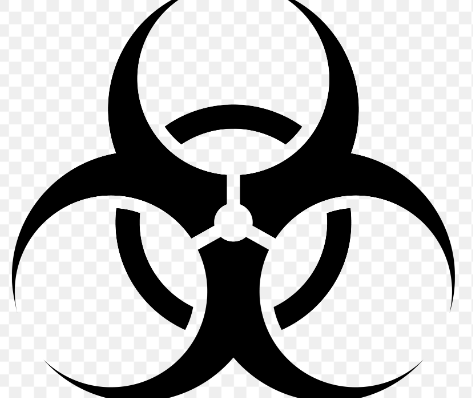Lab Safety
1/29
There's no tags or description
Looks like no tags are added yet.
Name | Mastery | Learn | Test | Matching | Spaced |
|---|
No study sessions yet.
30 Terms
Lab Safety
any procedure designed ensure safety while performing experiments
accidents are ____ in the lab
prone, likely
The three types of lab safety are
protection, prevention, and mitigation
Examples of protection
wearing proper clothing and safety gear, dressing, ethical lab behavior
Examples of prevention
pre-knowledge of safety procedures and risk hazards, delustering of workbench
Examples of mitigation
remaining calm, cleaning up spills, using lab safety equipment,
What is the most important mitigation technique
staying calm
Proper clothing in the lab includes everything except?
A. Pants
B. Long sleeves
C. open toed shoes
D. Hair tied up
open toed shoes
what does PPE stand for?
personal protective equipment
what are examples of PPE
Lab coat, goggles, vinyl gloves, heat and puncture resistant gloves, chemical apron
You should leave your personal belongings ______ or in a designated space to prevent contamination while in the lab
outside
All these are things you should never do in the lab except
A. Horseplay
B. Leave items on the edge of the table
C. Take notes
D. Eat and drink
Take notes
How long do are you supposed to wash your hands for?
twenty seconds
When using the fire blanket to put out a fire the person should be _____ ______
laying down
In what 2 circumstances would you use the shower in the lab>\?
when engulfed in flames or spilled chemicals
When someone spill chemicals on themselves in the lab they should first ______ their clothes THEN shower for at least _____ minutes
remove, 10
When and how long is the eye wash used?
When chemicals are spilled in the eye, for 10 minutes
Class A fire
wood/ paper; water can be used
Class B fire
Flammable liquids and organic chemicals; fire extinguisher can be used
Class C fire
Electrical equipment; fire extinguisher or flame blanket
Class D fire
Combustible metals ; fire extinguisher or flame blanket
Fume hoods minimizes exposure to _____ _____ by controlling harmless ____
hazardous chemicals, vapors
What item isn’t considered a sharp?
A. Beaker
B. Scalpel
C. Pipette tip
D. Needle
beaker
items like needles and pipette tips should be disposed of in the ____ bin and things soiled in blood or microbial waste should be disposed of in the ______ bin
sharps, biohazard
_______ _______ warn you of possible dangers in the lab to help you stay informed and prevent accidents. Every lab should have a ________ going over them
Safety symbols, booklet

What is this safety symbol?
eyes safety
eye protection is needed

what is this safety symbol?
broken glass

what is this safety symbol?
open flames
tie hair back and any loose articles of clothing, handle with care

what is the safety symbol?
poisonous or corrosive chemicals
do not waft, do not smell, wash hands after lab, avoid skin and eye contact

biohazard/sharps
Dispose of syringes and other sharps in a biohazard sharps container.
Dispose of culture dishes and pipets in biohazard bags and hard-sided leak-proof containers